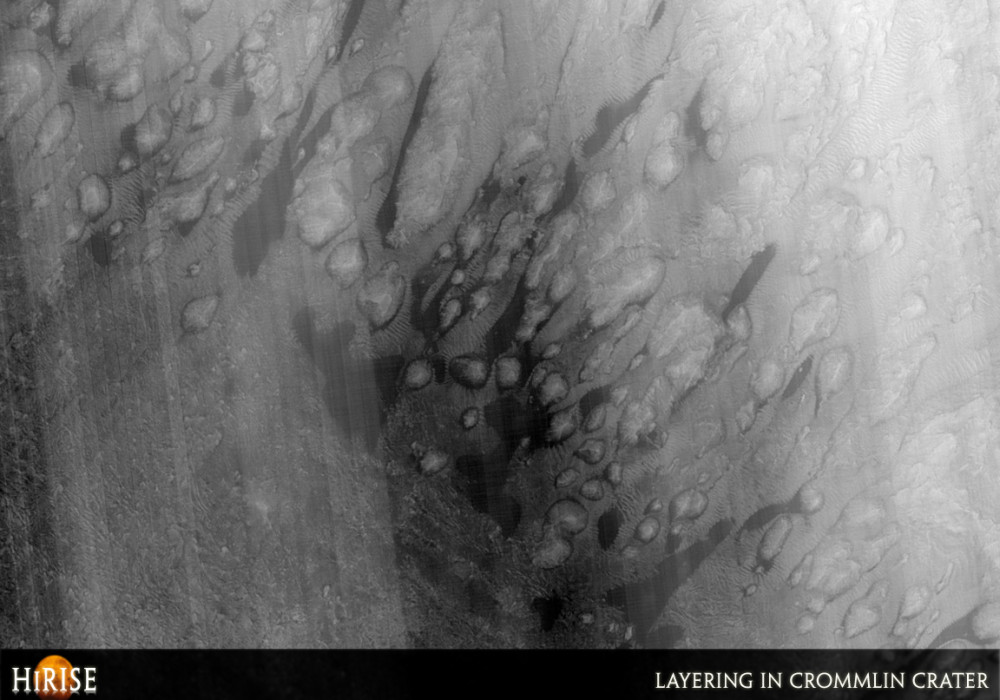Crommlin Crater is a little over 100 kilometers (62 miles) across and contains a mound of layered rock deposits. Layering in geologic materials is interesting because it represents a record of deposition over time. By studying such layered sequences, scientists attempt to tell what the local climate and environment were like in the past.
This image runs along the eastern side of the layered mound within the crater. Upslope is to the west, to the left of the image, and downslope is to the east, to the right of the image. Along the slope of the mound, the layered exposures are visible. The subimage included here (approximately 1.7 kilometers or 1.1 miles across; 1750 x 1439, 2 MB) shows an area with a sequence of layers that is very regular, like looking at the pages of a book edge on, or at the layers in a slice of cake from the side. Presumably these layers were once more continuous, perhaps reaching all the way to the crater wall (off-image to the right), and were then cut into by erosion so that we now see the layer edges.
Further upslope, to the left, are knobs, mesas, terraces, and other indications that layers also exist here, but were eroded in a more irregular manner. Unfortunately, the finest layering and details are not visible because the Martian atmosphere above Crommlin Crater at this time was dusty, making a clear image difficult for the HiRISE camera to obtain. Within the regular sequence of layering, however, a pattern of several fine layers separated by single thicker, or darker, layers are apparent. This repeating pattern may indicate that the conditions in which the sediments were originally deposited repeated over time.
Crommlin Crater is especially interesting because it is located very close to Meridiani Planum, which is where the MER Opportunity Rover has been exploring layered rocks up close. Comparison of nearby layers studied from the rover on the ground and from the spacecraft above will provide greater insight into the age and origin of these deposits.Written by: Patrick Russell (5 August 2007)
More info and image formats at http://hirise.lpl.arizona.edu/PSP_004421_1850
Image: NASA/JPL/University of Arizona
